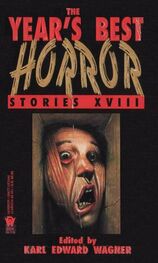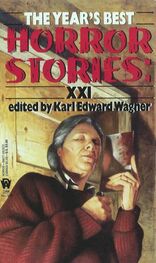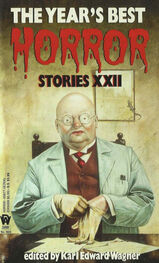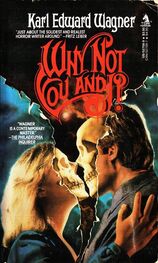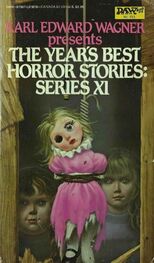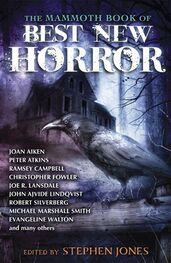“He was called Pumpkin Head because his head was too big for his body. It had grown too fast for the rest of him, and was soft and large. He only had a little patch of hair, on the top of his head, and the skin on all of his head was soft and fat. You could almost pull it out into folds. His eyes, nose, and mouth were practically lost in all the fat on his face.
“Someone said Pumpkin Head looked that way because his father had worked at an atomic plant and had been in an accident before Pumpkin Head was born. But this wasn’t his fault, and even his parents, though they loved him, were afraid of him because of the way he looked. When he stared into a mirror he was almost afraid of himself. At times he wanted to rip at his face with his fingers, or cut it with a knife, or hide it by wearing a bag over it with writing on it that said, ‘I am me, I am normal just like you under here.’ At times he felt so bad he wanted to bash his head against a wall, or go to the train tracks and let a train run over it.”
Raylee paused, and Ms. Grinby almost stopped her, but noting the utter silence of the class, and Raylee’s absorption with her story, she held her tongue.
“Finally, Pumpkin Head became so lonely that he decided to do anything he could to get a friend. He talked to everyone in his class, one by one, as nicely as he could, but no one would go near him. He tried again, but still no one would go near him. Then he finally stopped trying.
“One day he began to cry in class, right in the middle of a history lesson. No one, not even the teacher, could make him stop. The tears ran down Pumpkin Head’s face, in furrows like on the hard furrows of a pumpkin. The teacher had to call his mother and father to come and get him, and even they had trouble taking him away because he sat in his chair with his hands tight around his seat and cried and cried. There didn’t seem to be enough tears in Pumpkin Head’s head for all his crying, and some of his classmates wondered if his pumpkin head was filled with water. But finally his parents brought him home and put him in his room, and there he stayed for three days, crying.
“After those three days passed, Pumpkin Head came out of his room. His tears had dried. He smiled through the ugly folds of skin on his face, and said that he wouldn’t cry any more and that he would like to go back to school. His mother and father wondered if he was really all right, but secretly, Pumpkin Head knew, they sighed with relief because having him around all the time made them nervous. Some of their friends would not come to see them when Pumpkin Head was in the house.
“Pumpkin Head went back to school that morning, smiling. He swung his lunch pail in his hand, his head held high. His teacher and his classmates were very surprised to see him back, and everyone left him alone for a while.
“But then, in the middle of the second period, one of the boys in the class threw a piece of paper at Pumpkin Head, and then another. Someone hissed that his head was like a pumpkin, and that he had better plant it before Halloween. ‘And on Halloween we’ll break open his pumpkin head!” someone else yelled out.
“Pumpkin Head sat in his seat and carefully brought his lunch box up to his desk. He opened it quietly. Inside was his sandwich, made in a hurry by his mother, and an apple, and a bag of cookies. He took these out, and also the Thermos filled with milk, and set them on the desk. He closed the lunch pail and snapped shut the lid.
“Pumpkin Head stood and walked to the front of the room, carrying his lunch pail in his hand. He walked to the door and closed it, and then walked calmly to the teacher’s desk, turning toward the class. He opened his lunch box.
“ ‘My lunch and dinner,’ he said, ‘my dinner and breakfast.’
“He took out a sharp kitchen knife from his lunch pail.
“Everyone in the classroom began to scream.
“They took Pumpkin Head away after that, and they put him in a place—”
Ms. Grinby abruptly stepped from behind her desk.
“That’s all we have time for, Raylee,” she interrupted gently, trying to smile. Inside she wanted to scream over the loneliness of this child. “That was a very scary story. Where did you get it from?”
There was silence in the classroom.
Raylee’s eyes were back on the floor. “I made it up,” she said in a whisper.
To make up something like that, Ms. Grinby thought. I know, I know!
She patted the little girl on her back. “Here’s your candy; you can sit down now.” The girl returned to her seat quickly, eyes averted.
All eyes were on her.
And then something that made Ms. Grinby’s heart leap:
“Neat story!” said Randy Feffer.
“Neat!”
“Wow!”
Roger Mapleton, Jane Campbell.
As she sat down Raylee was trembling but smiling shyly.
“Neat story!”
A bell rang somewhere.
“Can it be that time already?” Ms. Grinby looked at the full moon-faced wall clock. “Why it is! Time to go home. I hope everyone had a nice party—and remember! Don’t eat too much candy!”
A small hand waved anxiously at her from the center of the room.
“Yes, Cleo!”
Cleo, red-freckled face and blue eyes, stood up. “Can I please tell the class, Ms. Grinby, that I’m having a party tonight, and that I can invite everyone in the class?”
Ms. Grinby smiled. “You may, Cleo, but there doesn’t seem to be much left to tell, does there?”
“Well,” said Cleo, smiling at Raylee, “only that everyone’s invited.”
Raylee smiled back and looked quickly away.
Books and candy bags were crumpled together, and all ran out under crepe paper, cats, and ghouls, under the watchful eyes of the jack-o’-lantern, into darkening afternoon.
A black and orange night.
Here came a black cat walking on two legs; there two percale sheet ghosts trailing paper bags with handles; here again a miniature man from outer space. The wind was up: leaves whipped along the serpentine sidewalk like racing cars. There was an apple-crisp smell in the air, an icicle down your spine, here-comes-winter chill. Pumpkins everywhere, and a half-harvest moon playing coyly with wisps of high shadowy clouds. A thousand dull yellow night-lights winked through breezy trees on a thousand festooned porches. A constant ringing of doorbells, the wash of goblin traffic: they traveled in twos, threes, or fours, these monsters, held together by Halloween gravity. Groups passed other groups, just coming up, or coming down, stairs, made faces, and said “Boo!” There were a million “Boo!” greetings this night.
On one particular porch in all that thousand, goblins went up the steps but did not come down again. The door opened a crack, then wider, and groups of ghosts, wizards, and spooks, instead of waiting patiently for a toss in a bag and then turning away, slipped through into the house and disappeared from the night. Disappeared into another night.
Through the hallway and kitchen and down another set of stairs to the cellar. A cellar transformed. A cellar of hell, this cellar—charcoal-pit black with eerie dim red lanterns glowing out of odd corners and cracks. An Edgar Allan Poe cellar—and there hung his portrait over the apple-bobbing tub, raven-bedecked and with a cracked grin under those dark-pool eyes and that ponderous brow. This was his cellar, to be sure, a Masque of the Red Death cellar.
And here were the Poe-people; miniature versions of his evil creatures; enough hideous beasts to fill page after page and all shrunk down to child size. Devils galore, with papier-mâché masks, and hooves and tails of red rope, each with a crimson fork on the end; a gaggle of poke-hole ghosts; a mechanical cardboard man; two wolfmen; four vampires with wax teeth; one mummy; one ten-tentacled sea beast; three Frankenstein monsters; one Bride of same; and one monster of indefinite shape and design, something like a jellyfish made of plastic bags.
Читать дальше
